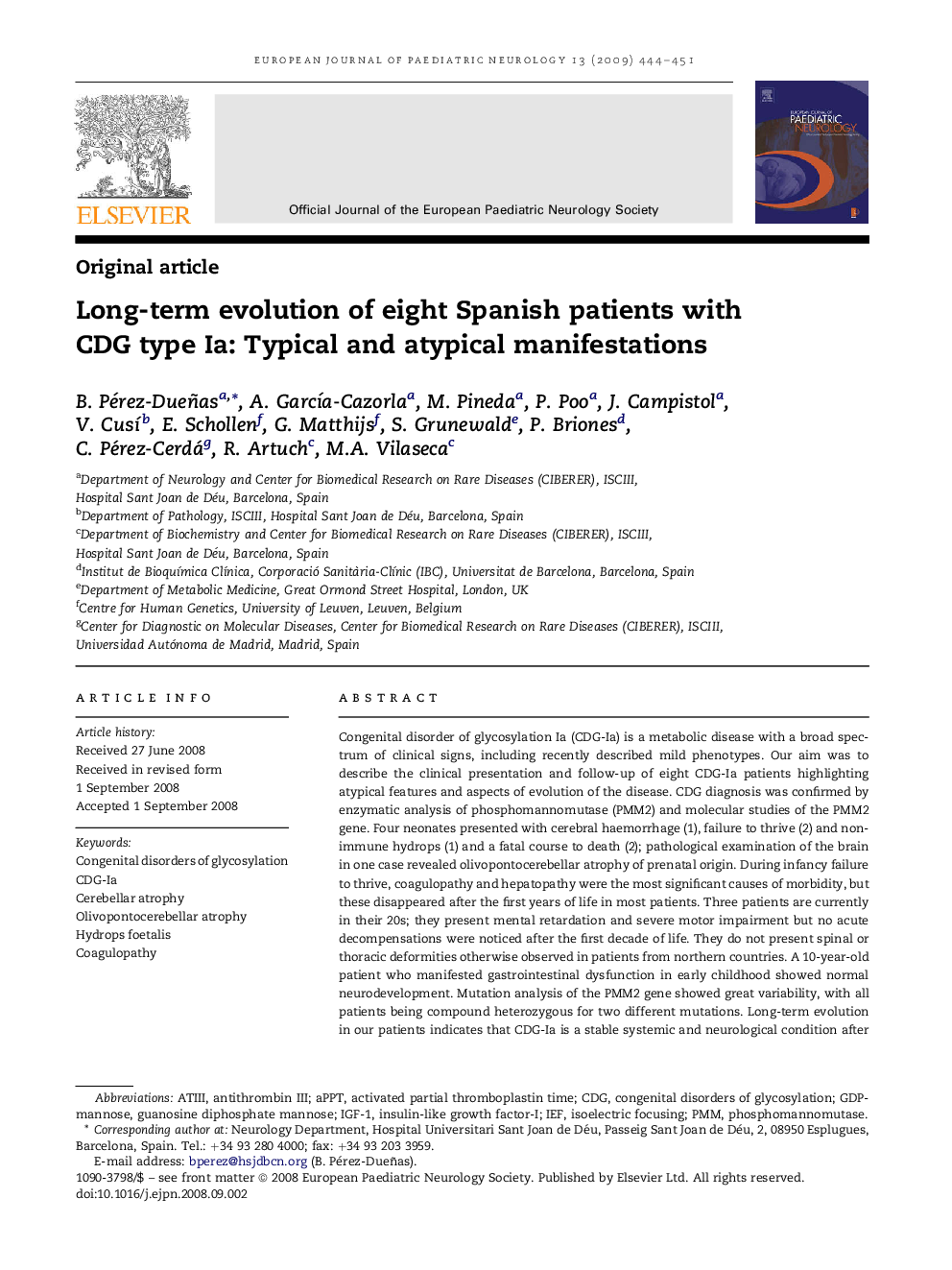| Article ID | Journal | Published Year | Pages | File Type |
|---|---|---|---|---|
| 3054600 | European Journal of Paediatric Neurology | 2009 | 8 Pages |
Congenital disorder of glycosylation Ia (CDG-Ia) is a metabolic disease with a broad spectrum of clinical signs, including recently described mild phenotypes. Our aim was to describe the clinical presentation and follow-up of eight CDG-Ia patients highlighting atypical features and aspects of evolution of the disease. CDG diagnosis was confirmed by enzymatic analysis of phosphomannomutase (PMM2) and molecular studies of the PMM2 gene. Four neonates presented with cerebral haemorrhage (1), failure to thrive (2) and non-immune hydrops (1) and a fatal course to death (2); pathological examination of the brain in one case revealed olivopontocerebellar atrophy of prenatal origin. During infancy failure to thrive, coagulopathy and hepatopathy were the most significant causes of morbidity, but these disappeared after the first years of life in most patients. Three patients are currently in their 20s; they present mental retardation and severe motor impairment but no acute decompensations were noticed after the first decade of life. They do not present spinal or thoracic deformities otherwise observed in patients from northern countries. A 10-year-old patient who manifested gastrointestinal dysfunction in early childhood showed normal neurodevelopment. Mutation analysis of the PMM2 gene showed great variability, with all patients being compound heterozygous for two different mutations. Long-term evolution in our patients indicates that CDG-Ia is a stable systemic and neurological condition after the first decade of life. The diverse phenotypes and atypical manifestations in our series may be due to their genetic heterogeneity.
